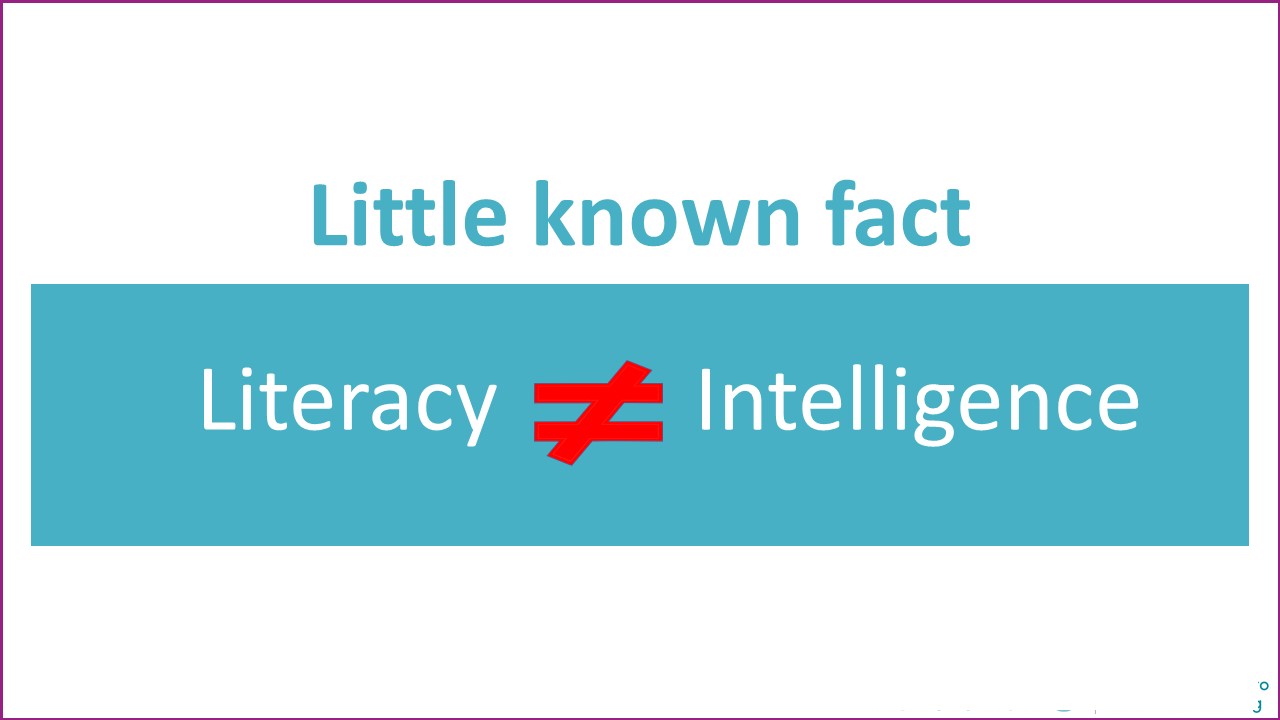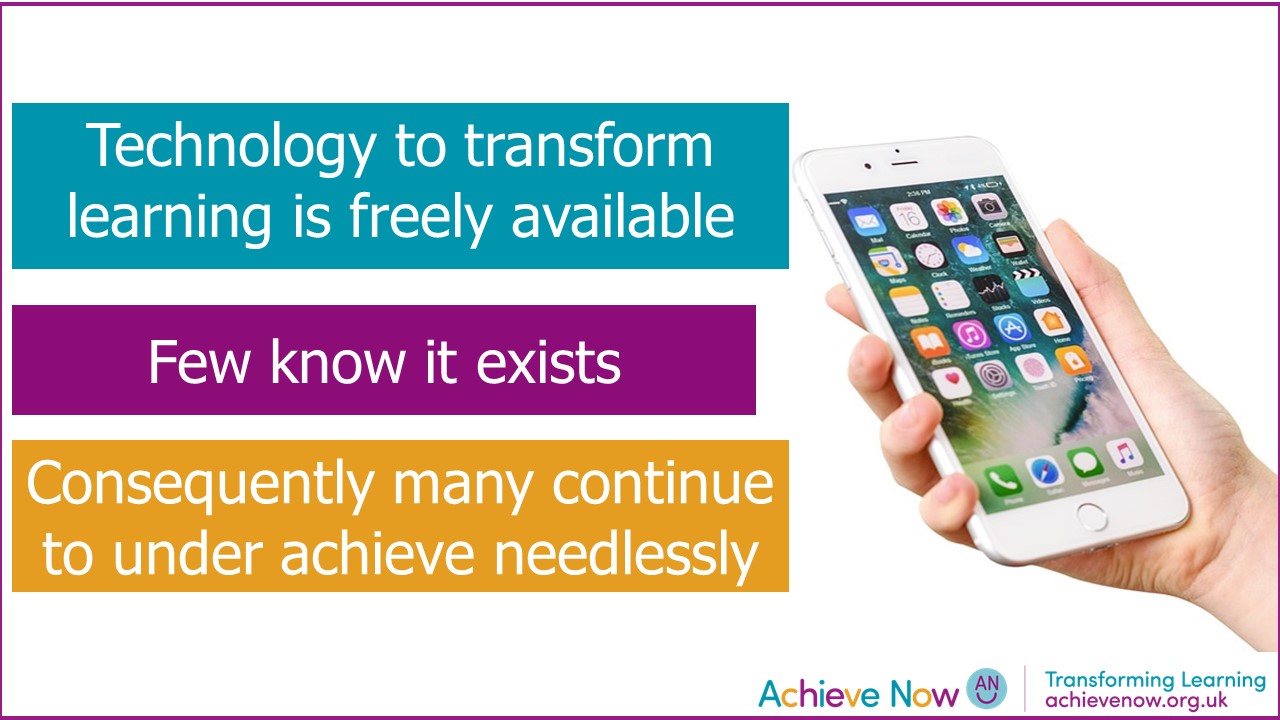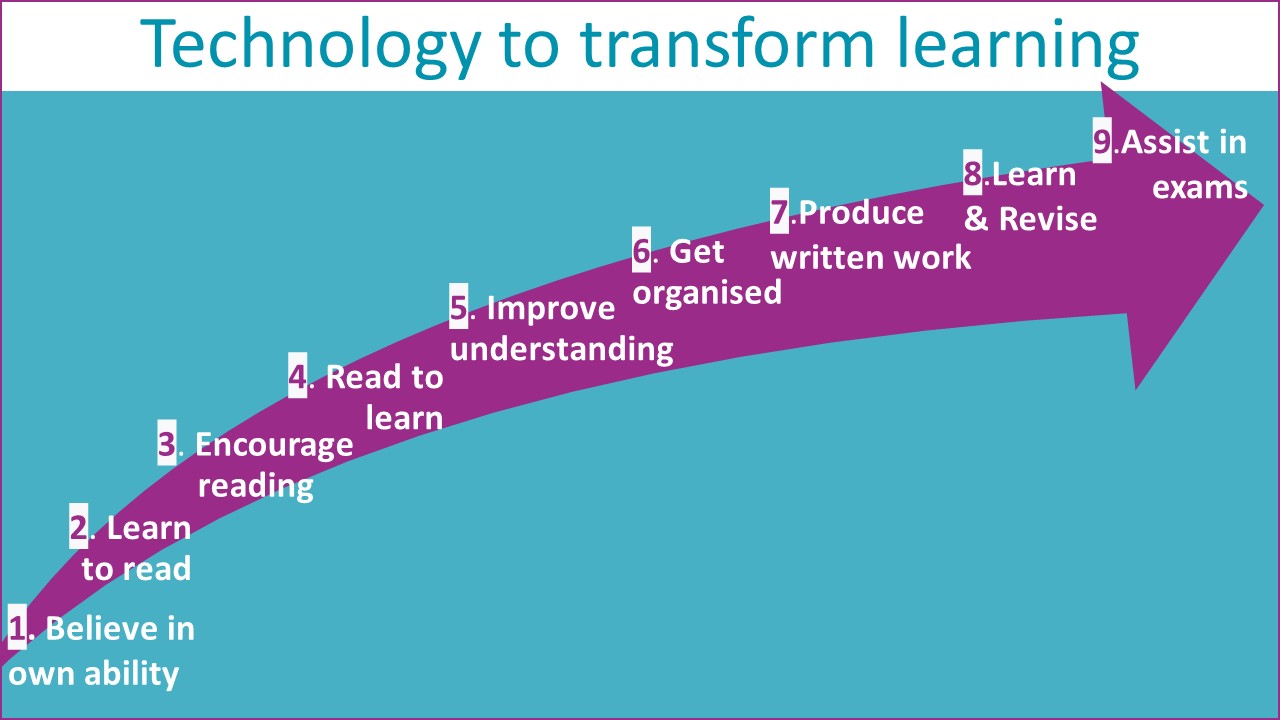How can technology transform learning?
Our education system relies on students being able to:
Read to gain knowledge
Write to express what they have learned
Be assessed by recalling and writing under time pressure
As a result, anyone struggling with literacy is automatically at a disadvantage across the whole curriculum.
Literacy is not the same as intelligence
Schools often confuse literacy for intelligence.
Dyslexics, despite often being extremely bright, frequently believe that they are stupid and some even give up on education.
As a result, talent goes unrecognised and individuals do not achieve their potential.
There are numerous examples of talented dyslexics who struggled profoundly at school but went on to live extraordinarily successful lives.
Students do not go from struggling to succeeding overnight once they are introduced to learning technologies.
Until a child understands that they are intelligent, it is hard for them to find the motivation required to learn new techniques and tech that could help them achieve their real potential
When technology is introduced as part of an overall strategy, it can have a profound inpact on results.
Firstly, students need to understand that they are bright and capable but that they simply learn differently. Otherwise learning new tech and techniques is too overwhelming.
Take a look at our encouraging videos.
This list has been compiled to help dyslexics better understand their many strengths.
“IF A CHILD CANNOT LEARN THE WAY WE TEACH,
MAYBE WE SHOULD TEACH THE WAY THEY LEARN”
Technology enables students to learn and progress without being restricted by their difficulties with reading and spelling. This applies from early years education to degree level and beyond in the workplace.
This is a list of the areas in which we use technology to aid learning:
The list above details areas where technology can help. For each area listed, there are many different solutions.
Which solutions are best?
Deciding on solutions for various areas of need includes consideration of these factors:
Budget
Age of student(s)
Level of learning difficulty
Type of learning difficulty
Confidence in learning new technology
The architecture/operating systems/software already purchased
Devices already purchased
The number of solutions on the market is simply overwhelming. Our aim is to do the research for you, so you don’t have to. We want to understand your specific requirements to make recommendations and transfer the knowledge needed to successfully take advantage of the functionality.
Learn from our experience so you can make wise decisions.
We are very aware that having a child with SpLD can be very expensive.
Wherever possible, we recommend using free or trial versions and only purchasing solutions when you are assured of the benefits.
Achieve Now does not sell any solutions or earn commission
We give totally independent advice
Below is a graphic depicting different types of technology which, if embraced at the appropriate time, can drastically improve academic attainment.
Free solutions are available in each of the areas shown above. All too often schools and parents don’t know they exist, so children struggle needlessly. Doing so can negatively impact on confidence, expectations and life opportunities.
many FREE SOLUTIONS are available for all age groups
Achieve Now is committed to ‘spreading the word’ so learners don’t struggle needlessly.
To this end, we have a YouTube channel to provide how to videos. We are always adding new and helpful content to this website and to our YouTube channel. Please go and have a look and see!








